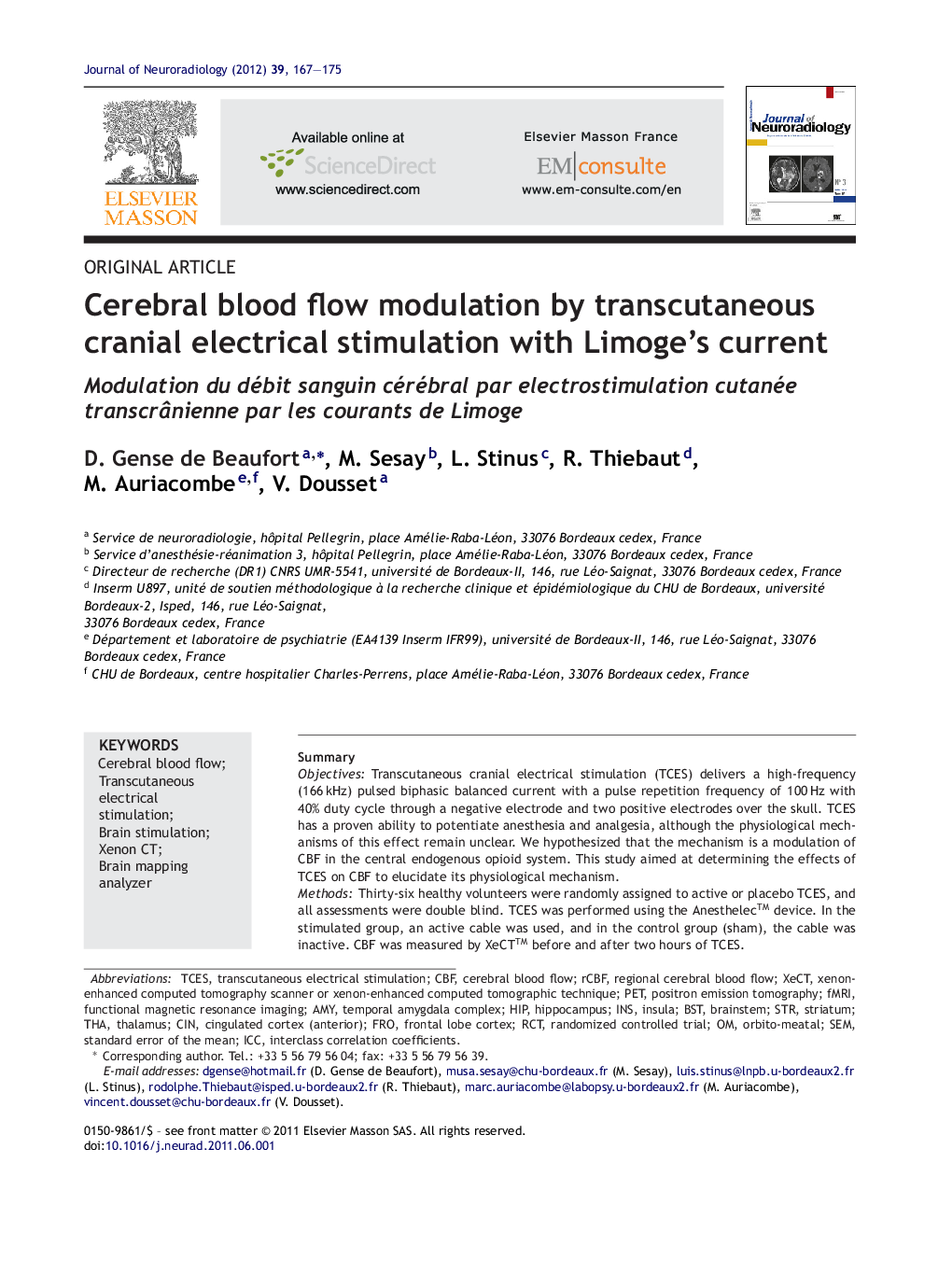| Article ID | Journal | Published Year | Pages | File Type |
|---|---|---|---|---|
| 4234123 | Journal of Neuroradiology | 2012 | 9 Pages |
SummaryObjectivesTranscutaneous cranial electrical stimulation (TCES) delivers a high-frequency (166 kHz) pulsed biphasic balanced current with a pulse repetition frequency of 100 Hz with 40% duty cycle through a negative electrode and two positive electrodes over the skull. TCES has a proven ability to potentiate anesthesia and analgesia, although the physiological mechanisms of this effect remain unclear. We hypothesized that the mechanism is a modulation of CBF in the central endogenous opioid system. This study aimed at determining the effects of TCES on CBF to elucidate its physiological mechanism.MethodsThirty-six healthy volunteers were randomly assigned to active or placebo TCES, and all assessments were double blind. TCES was performed using the Anesthelec™ device. In the stimulated group, an active cable was used, and in the control group (sham), the cable was inactive. CBF was measured by XeCT™ before and after two hours of TCES.ResultsGlobally, CBF was unchanged by TCES. However, locally, TCES induced a significant CBF decrease in the brainstem and thalamus, which are structures involved in pain and anxiety (TCES and control CBF decrease were 18.5 and 11.9 mL/100 g brain tissue/min, respectively).ConclusionTCES can modulate local CBF but it has no effect on overall CBF. [Clinical Trials. gov number: NCT00273663].
